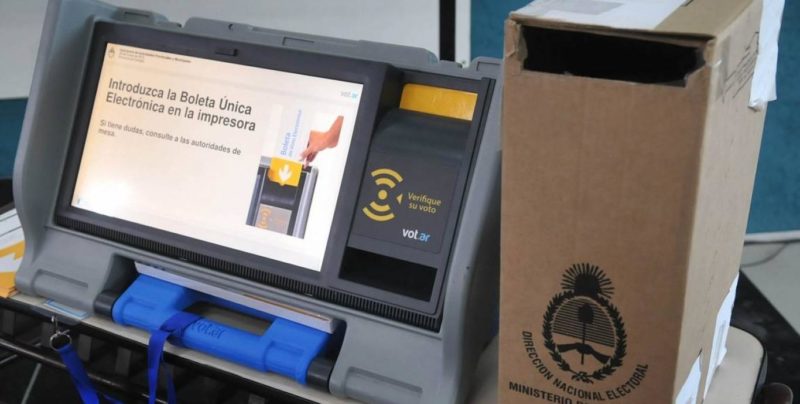We explain what suffrage is, how it is classified and the voting techniques used. Also, its characteristics and speculations.
What is the Suffrage?
Suffrage is the social and political right to participate in electoral elections, that is, the constitutional exercise of voting for public office. In broad terms, the term suffrage encompasses both the right to vote (active), together with the essential citizen requirements to do so; such as the right to run for a vote (passive), along with the conditions that determine who and how can be elected.In democratic government models, the primary source of legitimacy of a political exercise is precisely suffrage: the validation of political power or authority comes from the popular election and not from the appointment by other powers. For this, the vote must have certain guaranteed conditions:
- Universal: Everyone should be able to vote.
- Secret: No one should be able to know who another citizen voted for.
- Direct: The vote must be for the elected candidate and not for secondary representatives who would then vote again to elect the candidate.
Types of suffrage
There are two recognized forms of suffrage:
- Universal: It guarantees the right of electoral participation to all adults (that is, of legal age) of a nation, without making any distinction for their race, creed, gender, sexual orientation, social, economic or political position.
- Restricted: Also known as "census", it allows the right to vote to people who appear in a specific census, that is, a list drawn up based on certain criteria that allow political exercise.
Suffrage techniques
 According to the logistical and technological order available for the electoral exercise, we can talk about:
According to the logistical and technological order available for the electoral exercise, we can talk about:
- Manual voting: It is carried out through various systems of ballots and printed media, in which the voter must mark their choice, or from which they must choose the desired ballot and place it in a container of some kind. Finally, the containers are opened and the votes are manually counted.
- Electronic voting: It is carried out using a special computer or a machine designed for electoral purposes, capable of storing the vote of many citizens and then transmitting it promptly to the totalizing entity, leaving an electronic record of voting activity without violating its secrecy.
Who can vote?
Usually, the right to vote to elect public office in a country (and to run for it) is restricted to citizens of that country, that is, to those who possess the relevant nationality. This varies according to the laws of each nation and may restrict the vote to non-nationalized residents, or allow it for certain offices (usually not for the offices of president and congressman).
Minimum age to vote
 The minimum age stipulated to exercise the right to vote is usually determined by the age of the majority, which varies between 18 and 21 years of age (in some countries you can vote from 16). The group of youth usually determines a large portion of the voters in the nations (between 20 and 50%), depending on the chosen age ranges.
The minimum age stipulated to exercise the right to vote is usually determined by the age of the majority, which varies between 18 and 21 years of age (in some countries you can vote from 16). The group of youth usually determines a large portion of the voters in the nations (between 20 and 50%), depending on the chosen age ranges.
Can prisoners vote?
The case of citizens sentenced to justice, that is, prisoners also tends to vary between countries. In many nations they are allowed to vote freely, through specially arranged days, while in others, such as the United States, this right is totally prevented, as part of the citizen sanctions to which they are subjected once sentenced by a court. . This prohibition can be extended, in some places, even after serving the sentence.
Suffrage and disabilities
The United Nations Organization contemplates, in its charter of human rights, that there is no disability, not even mental or mental, that prevents a citizen from exercising his right to vote. However, in many cases, intellectual or mental disabilities (mental retardation, neurological diseases, psychosis, etc.) cannot freely vote.
Female suffrage
 The struggle for the female vote has become an emblem of citizen and political rights denied entry to many human groups, which will take years of social pressure, organized struggle, and numerous deaths to obtain.
The struggle for the female vote has become an emblem of citizen and political rights denied entry to many human groups, which will take years of social pressure, organized struggle, and numerous deaths to obtain.The female vote was achieved during the nineteenth century, very unevenly between countries. One of the first to recognize it was South Australia in 1861. And one of the last to do so was Spain in 1931.
Military suffrage
A commonplace during the history of world suffrage was to deprive the military and police of their right to vote , since these organizations are part of the monopoly of state violence and therefore had to remain totally apolitical. This distinction continues, especially in the case of the military, in many countries, although the trend is towards universal voting without distinction.
Universal vote
 The first country in the world to give its citizens of legal age the right to vote universal and irrevocable was Finland, and the second was New Zealand in 1893. The first Latin American country to do so was Uruguay in 1917.
The first country in the world to give its citizens of legal age the right to vote universal and irrevocable was Finland, and the second was New Zealand in 1893. The first Latin American country to do so was Uruguay in 1917.Nowadays the universal and direct vote is understood as one of the irrevocable conquests of democracy as a system of government, and there is pressure on countries whose dictatorial or religious extremist regimes are curtailing it for different cultural or political reasons.
Suffrage speculations
Much is speculated on the future of suffrage, closely linked to that of democracy and political exercise as we understand it today in most countries.The science-fiction writer Isaac Asimov, for example, in his story "Universal Suffrage" points to the replacement of voters by a supercomputer called "Multivac", in whose decisions the needs of the entire human population would be considered.
In other political dystopias such as George Orwell's "1984", on the other hand, the vote does not even exist as a political mobilizer of future societies, sentenced to various technological forms of totalitarianism.
Veronica is a culture reporter at Collaborative Research Group, where she writes about food, fitness, weird stuff on the internet, and, well, just about anything else. She has also covered technology news and has a penchant for smartphone stories. .
Leave a reply
Your email address will not be published. Required fields are marked *Recent post

Sport: What Is It, Types, Risks, Features, Characteristics and Examples
September 23, 2021

Dogs: Emergence, Features, Characteristics, Feeding and Breeds
September 24, 2021

Story: Definition, Elements, Structure, Features and Characteristics
September 24, 2021

Essay: Definition, Structure, Features, Characteristics, How to Do It
September 24, 2021
